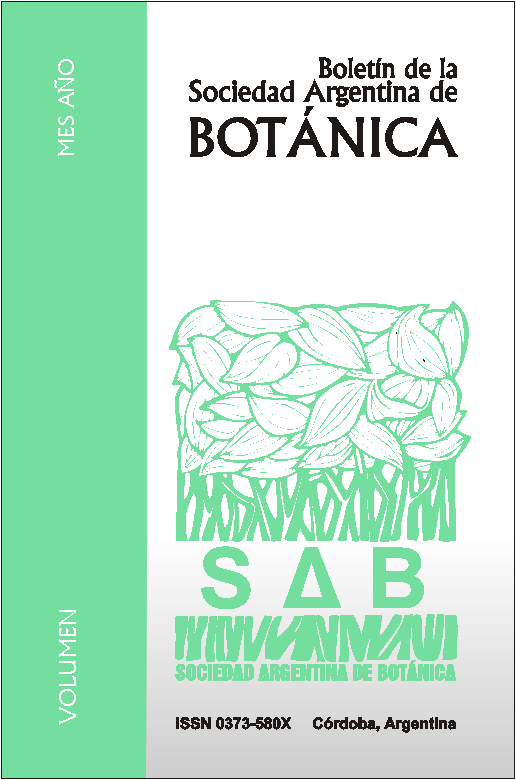Análisis florísticoestructural de los núcleos boscosos espontáneos del parque J. F. Villarino (Zavalla, Santa Fe, Argentina) Floristic-structural analysis of spontaneous little forests in the J. F. Villarino park (Santa Fe, Argentina)
DOI:
https://doi.org/10.31055/1851.2372.v48.n2.6264Resumo
Summary: Floristic-structural analysis of spontaneous little forests in the J. F. Villarino park (Santa Fe, Argentina). The anthropization process in the Pampean grassland has brought about an increasing presence of trees. In this study we analyzed the structure and composition of little forests which have resulted from the spontaneous multiplication of tree species in the J. F. Villarino Park, in Zavalla, Province of Santa Fe, Argentina. Using a plot sampling method, individuals were counted to determine density per species in the upper and treelets strata. Height and DBH of individuals in the upper stratum were recorded. Abundance-coverage of herbaceous and woody species saplings was estimated in the lower stratum. Soil humidity and ground-level light intensity were measured. Data were analyzed using multivariate methods. Three types of little forests were identified: a mixed one, another dominated by Acer negundo and a third with dominance of Ligustrum lucidum. Differences in DBH-height relationship were significant among the three groups. Soil humidity and light intensity did not differ significantly. Young individuals of the dominant species in the upper stratum are found in the under-storey. The lower herbaceous stratum is discontinuous. These forests contain many native species.
Key words: Acer negundo, exotic species, invasive woody plants, Ligustrum lucidum, native invasive species, Pampas trees, patches.
Resumen: Con la antropización de la región pampeana fue creciendo en importancia la presencia del árbol. El objetivo de este trabajo es analizar la composición y estructura de los núcleos boscosos resultantes de la multiplicación espontánea de especies arbóreas en el parque J. F. Villarino en la provincia de Santa Fe (Argentina). En un muestreo se contaron los individuos y determinó densidad por especie del estrato superior y renovales. Se registró altura y DAP de los individuos del estrato superior. En el estrato inferior la abundancia-cobertura de juveniles de leñosas y herbáceas fue estimada para cada especie. Se midió humedad del suelo e intensidad de la luz a nivel del suelo. Los datos se analizaron fundamentalmente con métodos multivariados. Se reconocieron tres tipos de núcleos boscosos: uno Mixto y dos con dominancia de Acer negundo y Ligustrum lucidum respectivamente. La relación entre DAP y altura resultó significativamente diferente entre los grupos. No se encontraron diferencias significativas de humedad e intensidad de luz entre los grupos. Las especies dominantes en el estrato superior presentan individuos jóvenes en el sotobosque. El estrato inferior herbáceo es discontinuo. Estos núcleos boscosos contienen muchas especies nativas.
Palabras clave: Acer negundo, árboles en la pampa, exóticas, invasoras nativas, leñosas invasoras, Ligustrum lucidum, parches.
Downloads
Edição
Seção
Licença
Proporciona ACESSO ABERTO imediato e livre ao seu conteúdo sob o princípio de tornar a pesquisa livremente disponível ao público, o que promove uma maior troca de conhecimento global, permitindo que os autores mantenham seus direitos autorais sem restrições. 
Material publicado em Bol. Soc. Argent. Bot. é distribuído sob uma licença Creative Commons Attribution-NonCommercial-ShareAlike 4.0 International License. 





